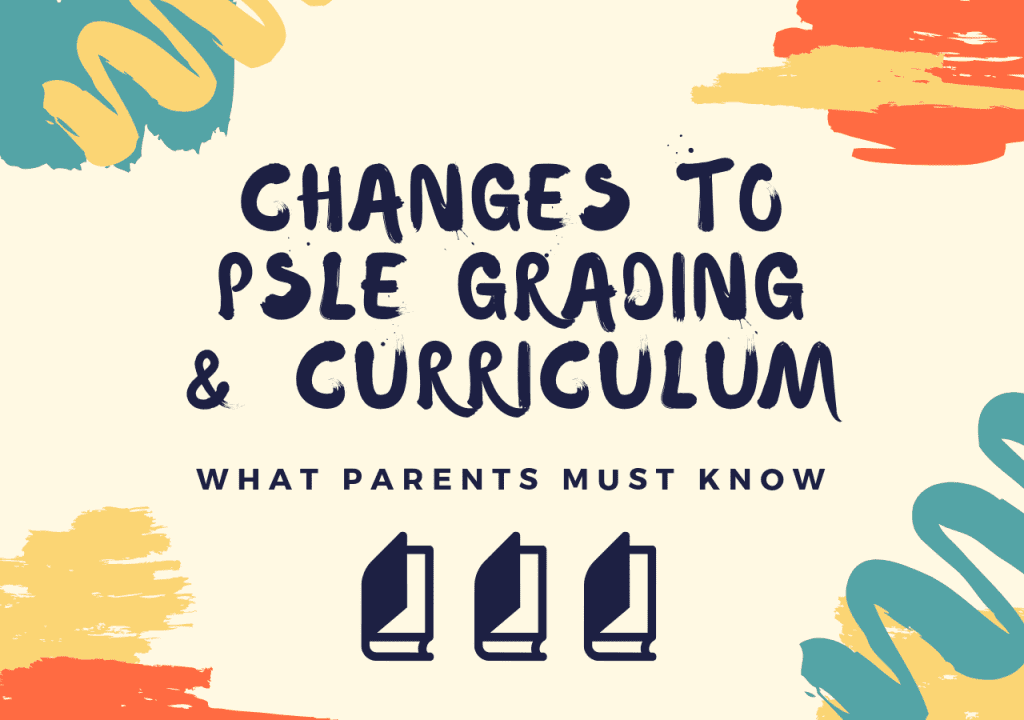
The Singapore education system is known to be highly demanding and deeply focused on academics. In recent years, however, the Ministry of Education has taken steps towards a new curriculum, one that is underpinned by a more well-rounded learning beyond exam results.
Small measures, such as not naming the top Primary School Leaving Examination (PSLE) scorers have already been implemented, but many more are to come. From 2019 to all the way to 2023, there will be changes that affect examinations across many levels, as well as the PSLE grading system.
Here, I will share with you the key changes to primary curriculum and the fresh Ministry of Education policies that students and parents should look out for:
1. No exams for Primary 1 and Primary 2
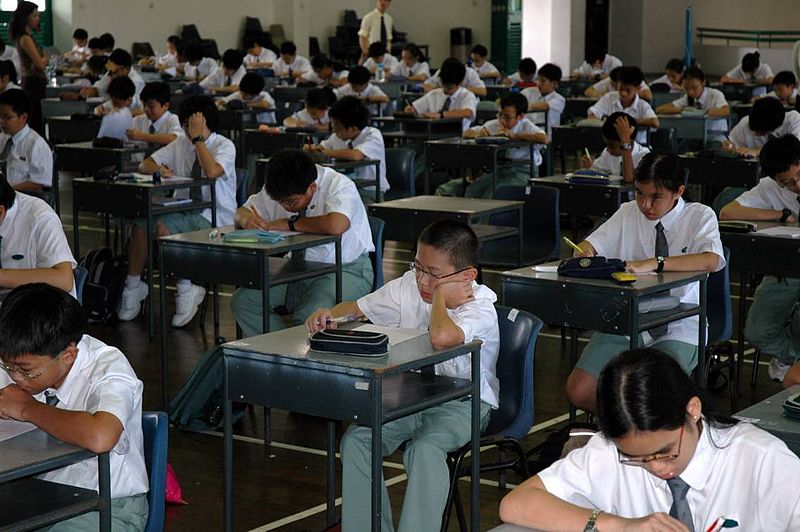
At the moment, Primary 1 students are not subjected to any semestral exams, but they do have weighted assessments (such as quizzes, projects, and presentations) conducted throughout the year which add up to a final grade. On the other hand, Primary 2 students also have weighted assessments, on top of final year papers.
From 2019 onwards, weighted assessments and examinations will be scrapped completely out of the Primary 1 and Primary 2 MOE curriculum. This does not mean the removal of all forms of assessments. Teachers can still continue giving small quizzes to have a gauge of their students’ level of understanding, but any assessment conducted will not count towards a final score.
In essence, Primary 1 and 2 students will have no tests and no grades.
2. No mid-year exams for Primary 3 & 5
Furthermore, the Primary 3 and Primary 5 and levels will have their mid-year examinations removed either from 2020 or 2021.
The rationale behind this is to allow time for students to adjust during transition years when they take on new subjects or when the demands of their curriculum grow.
3. Limits to weighted class tests per term
From 2019 onwards, all levels from Primary 3 to Secondary 4/5 cannot have more than one assessment, per subject and per term, that counts towards the final year-end grade. This excludes the official exams conducted during the mid-year (if any) and the year-end.
4. Adjustment to Edusave awards criteria for Lower Primary
Since weighted assessments will be completely removed for the Primary 1 and Primary 2 levels, MOE will adjust the criteria for awarding the Edusave Merit Bursary (valued at $200) to students from Primary 1 and Primary 2, as well as the Edusave Good Progress Award (valued at $100) to Primary 2 and Primary 3 students.
As a recap, the Edusave Merit Bursary is currently intended to reward students within the top 25% of their level and course in terms of academic performance. Eligible students come from a family whose gross monthly household income does not exceed S6,900.
The Edusave Good Progress Award, on the other hand, is for students who are not recipients of the Edusave Merit Bursary and fall within the top 10% of their level and course in terms of improvement in academic performance.
With the absence of academic performance as a yardstick, MOE will turn to positive traits such as diligence, curiosity, collaboration and enthusiasm in learning to recognise deserving students.
5. Adjustments to what’s displayed in a report book
From 2019, a student’s report book, officially known as the Holistic Development Profile (HDP), will no longer show the position of the student in relation to the rest of his/her class or cohort.
On top of that, where marks are shown, they will be rounded off to the nearest whole number, and failing marks will not be highlighted. Also, academic indicators such as L1R4 and L1R5 scores (which reflects grades for the first language and four or five relevant subjects) will not be displayed for lower secondary students.
For Primary 1 and 2 students that are not graded, teachers will use qualitative descriptors to report on the student’s learning progress.
6. Reform of the current PSLE grading system to a new PSLE scoring system
From 2021, the current PSLE scoring system which involves T-scores will give way to the eight bands of Achievement Levels (AL). To put it simply, the marks that the student achieves will be translated to a scoring band of AL that ranges from one to eight, with one being the highest (90 marks and above) and 8 being the lowest (below 20 marks).
The image below is an overview of the scoring system after the PSLE changes:

With the new PSLE grading system, the sum of the AL grades in various subjects will make up the score for PSLE 2021 and beyond. The best PSLE score, which is four, is achieved when a student scores 90 and above in all four subjects (English, Maths, Science and Mother Tongue).
Currently, the sum of the T-scores would be the student’s PSLE aggregate.
7. New criteria for streaming based on the changes to PSLE grading
In line with the upcoming PSLE grading system, the criteria for streaming will undergo a revamp as well. The minimum PSLE score for Express stream would be 22 or less; for the Normal (Academic) stream, 25 or less; and for the Normal (Technical) stream, 30 or less, including at least an AL7 for English and Maths.

Any student who scores 31 or 32, which would mean an AL8 for English and/or Maths, would have to retake their PSLE or apply to the NorthLight and Assumption Pathway specialised schools.
8. Choice matters for secondary school admission
In the current Secondary (1) Posting Exercise, students are admitted to vacant spots within schools based on merit (i.e. PSLE scores). Therefore, a school that is listed as a student’s first choice may go to someone else who has it listed as his/her second choice because the latter has a higher PSLE score. This merit-based posting will continue.
The choice order, however, will come into play more frequently with the new PSLE grading system. As the variety of grades decreases to only 29 possible scores (as compared to over 200 T-score aggregates), they will be more students with the same PSLE scores. Hence, it will be more commonplace for two students with the same PSLE scores to compete for the same secondary school position.
In such a case, the student who has listed the school as his/her first choice out of the six choices will be prioritised over the other who has listed it as his/her second choice. If they have listed it in the same choice order too, then a computerised balloting system will be utilised as a tie-breaker.
9. Greater access to affiliated secondary schools
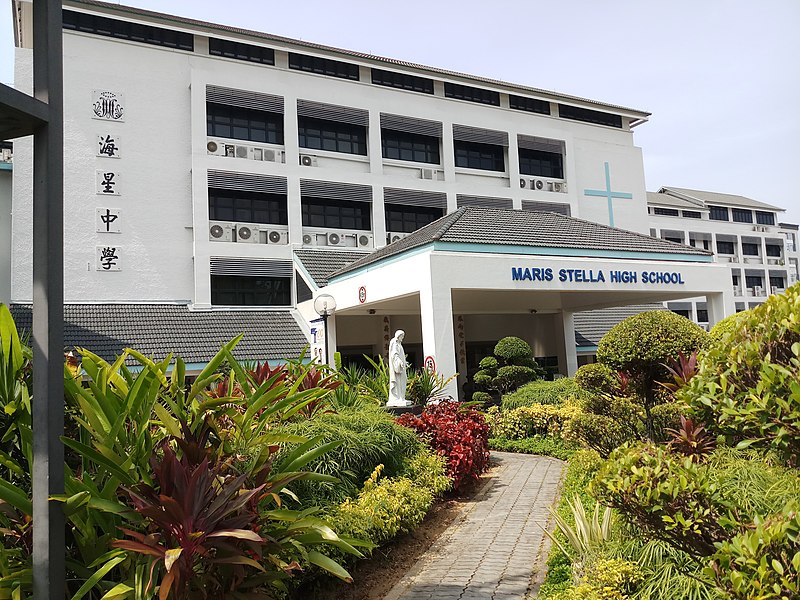
Affiliated secondary schools offer lower entry requirements for students from affiliated primary schools as compared to non-affiliated ones. This is achieved through a lower PSLE cut-off point for affiliated students. Currently, there are 27 such secondary schools with affiliation.
From 2019, 20% of places in affiliated secondary schools will be set aside for non-affiliates, which broadens the access of schools to students from all backgrounds.
10. Primary Schools to set up Applied Learning Programmes
The term “applied learning” has been tossed around casually in recent years, but what does it really mean?
According to MOE, “Applied Learning refers to an approach that emphasises authentic and practice-oriented learning experiences, and is not necessarily restricted to vocational or technical education. It gives students additional opportunities to acquire skills and qualities based on the practical application of knowledge in real-world contexts, and strongly supports our focus on developing 21st century competencies and values in our students.”
In summary, applied learning is characterised by its relevance to current trends, its hands-on learning methods, and its practical approach to applying knowledge.
More than 80 of the 191 primary schools already have Applied Learning Programmes (ALP), but MOE would like to go further: All primary schools will set up ALP by 2023.
What are other recent changes to the Singapore education curriculum?
A lot of changes will come, yes. But there are more that has already been implemented recently. Here are some of them:
(i) Enhance in the DSA scheme
Since 2018, all secondary school can take up the enhanced Direct School Admission (DSA) scheme. This scheme recognises the achievements of students in fields not related to academics (for example sports and arts) and allows them to be given placements in secondary schools before sitting for the PSLE.
The enhanced version of DSA allows secondary schools to reserve up to 20% of their non Integrated Programme places for qualifing Primary 6 Students. On top of that, refinements in the DSA selection process mean that applying students will not need to undergo a test on general academic abilities.
(ii) Increase in talent-based admissions
Based on similar intentions, polytechnics were allowed to admit up to 15% of their students through the Early Admission Exercise (EAE) since 2018. The EAE was set up just in 2016 with an intake guideline of 2.5%, which was increased to 12.5% in 2017.
Before this, in 2017, universities were given the green light to admit 15% of their students based on talents, a rise from the 10% previously.
Singapore’s Institute of Technical Education (ITE) too have their ITE EAE which allow aptitude-based admissions. This will also be expanded as courses will do away the cap of 30% to 50%, giving the possibility of 100% intake based on aptitude and interest.
What are the messages behind these PSLE changes and changes to primary curriculum?
When I take a look at all the new revisions above, it’s clear that MOE is very actively revamping not only how education is being delivered, but also what it even means. The overhaul shows that Singapore is completely serious about de-emphasising grades and going beyond being book smart. Instead, they are moving towards a new Singapore curriculum that hone talents, nurtures the joy of learning, and imparts valuable lifelong skills and knowledge.
Here are some of the messages that tie in with the changes:
(i) Don’t sweat the grades
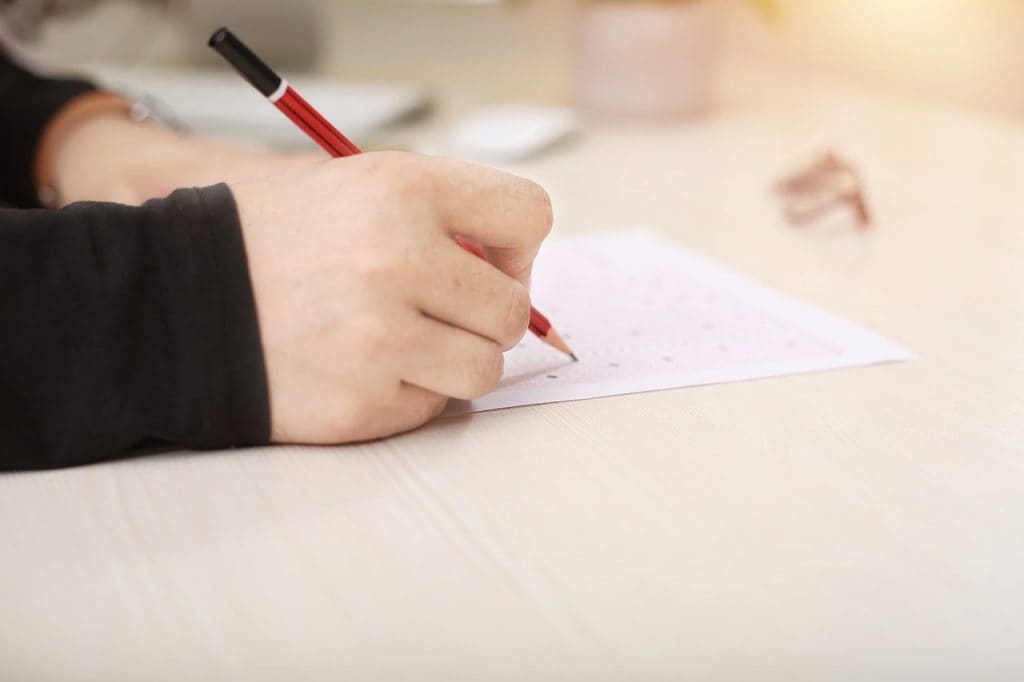
Removing decimal points by rounding off marks to a whole number when it’s displayed in a student’s report book may seem like such a trivial matter.
However, the message is clear: Don’t focus excessively on grades!
This small move goes hand-in-hand with the cessation of the announcement of PSLE’s top scores and their T-scores.
(ii) Stop competing, focus on your own learning
Competition can be healthy, but it’s clear that Singapore has been breeding a hyper-competitive culture in academia. Over-emphasis on academic achievements within the Singapore education curriculum can easily lead to stress and anxiety among students. By stripping away classroom and rankings in report books, and by simplifying PSLE marks into eight scoring bands, MOE is attempting to tone down differentiation and competition amongst peers.
Instead, they’d like to foster an environment where students can focus on their own learning, which is much healthier than trying to outdo everyone else.
(iii) Less rote-learning and more applied learning
MOE is pushing for a goodbye to an emphasis on rote-learning, which features memorisation, repetition, and regurgitation. Rote learning is exactly what makes “cramming” for an imminent exam so popular. While knowing the correct information is important, what’s even more important is understanding the principles behind the information.
When mid-year examinations are abolished, an estimated three weeks of curriculum time will be freed for every two years. This time will be used for teachers to engage in “teach less, learn more” techniques that will deepen understanding.
With understanding, students can transfer their knowledge to solve problems and execute real-life tasks, which is the point of learning, isn’t it? This is why applied learning will soon be one of the key features of Singapore’s education system.
(iv) Be well-rounded individuals
Developing well-rounded individuals is aided by hands-on learning, which would gear students with what they need to navigate life after graduation. Certain values and skills cannot be instilled through teaching; they have to be experienced.
Apart from nurturing holistic individuals that are capable of applying what they have learnt, Singapore would also like to nurture talents. The increase in talent-based admissions across various levels give talented individuals the avenues to develop their capacity. The curriculum is also being customised to cater to students with varying strengths outside of academics.
(v) Learn for life
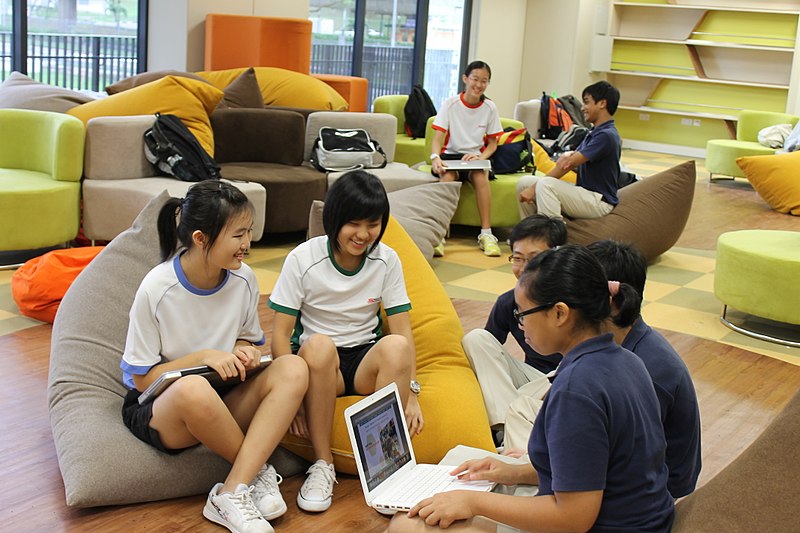
Education Minister Ong Ye Kung has used the term Learn for Life to represent “a value, an attitude and a skill that our students need to possess.” This would support education’s role in being an “uplifting force” in society.
To ensure a future of lifelong learning and to promote higher education in Singapore, students need to be instilled with the spirit of learning. No doubt the Singapore education system will still remain rigorous, underlining the importance of education in Singapore, but joy should not be compromised at the expense of academic results. When this is successful, students will remain eager to learn, a trait that will allow them to adapt to the changes in the fast-paced world.
Will the new Ministry of Education policies work?
When put together and working concurrently, the new Ministry of Education curriculum will no doubt move Singapore’s education system towards a positive direction. But whether Singaporeans will embrace the messages that come along with the changes, however, is another question.
I believe that there’s still inertia from local parents and students alike to move away from grades and focus on skills and other aspects of education. After all, getting good grades is still the tried-and-tested method of gaining admissions to the most prestigious schools, which would then open doors to wonderful career prospects. This is why the notion of “no more PSLE” is not even a remote possibility.
But who’s to say that with the new PSLE grading system is better than the old PSLE grading system? If you examine it closely, it might even lead to more pressure and stress among students! With fewer assessments and tests in primary and secondary schools, will teachers throw in more worksheets and homework, albeit non-weighted ones? Will the changes lead to students having more school-life balance, or will their workload increase? And how easy is it for schools admitting students to gauge someone’s passion and aptitude, which is not as clear-cut as grades? These are but some of the concerns that MOE will face in time to come.
In the meantime, it’s obvious that grades are a top worry among parents, as evidenced by Singapore’s tuition industry which is worth over $1.1 billion. This is certainly good business for my tuition agency, but will parents negate the efforts of MOE and the benefits of the new curriculum by throwing in more grades-focused tuition in order for their child to get a PSLE score of four? These are the same parents who would then lament that “the Singapore education system too stressful lor!”
(In my defense, there are many merits of tuition that will help rather than hinder a child’s learning progress. It can prove beneficial for many, particularly those who either need tuition, or those who enjoy tuition.)
Overall, I view the Singapore government education policies, as well as the education changes in a very positive note. I believe that the main challenge for MOE is to persuade parents that developing a well-rounded child is more important than developing one that is only exam smart. Otherwise, we can wait; as we move towards a future where there are many avenues to success (other than the As), perhaps this mindset will slowly shift too.
